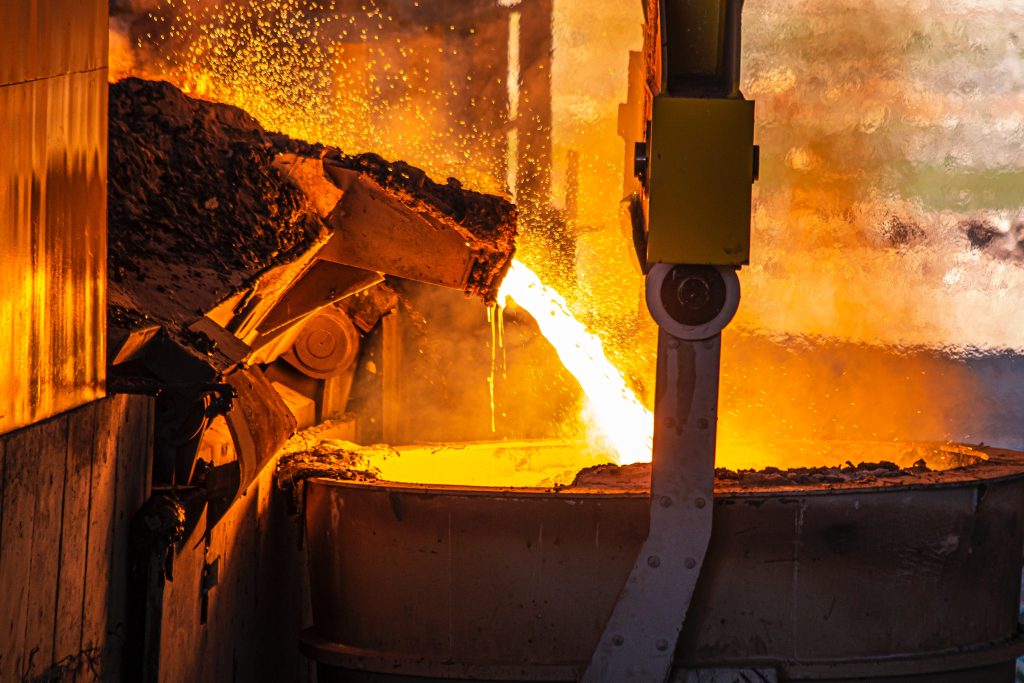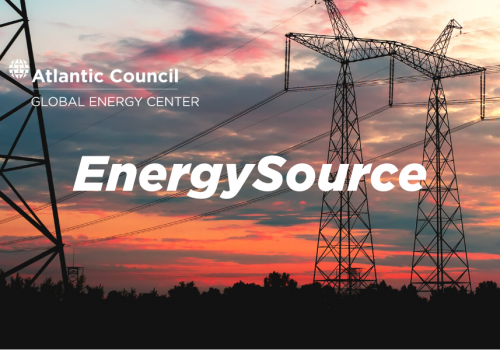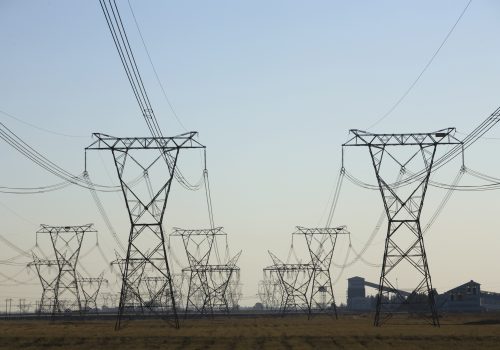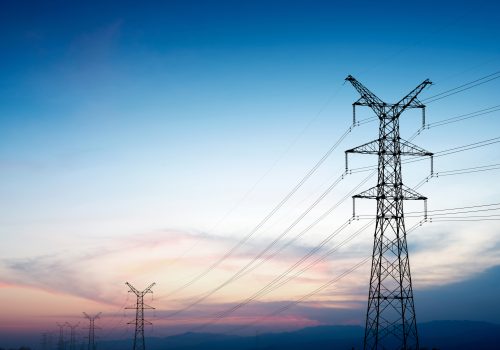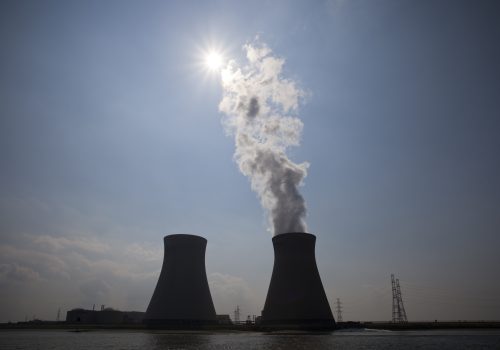As countries work toward long-term net-zero goals, heavy industry has come under scrutiny as one of the highest-emitting sectors. Steel, in particular, is an important area of focus as both a carbon-intensive industry and one of the world’s most widely used materials. Steelmaking accounts for between 7 and 9 percent of global CO2 emissions. While other high-emitting sectors, such as power and transportation, have clear long-term pathways toward decarbonization via electrification, steelmaking is complicated by “process emissions” from consumption of coal as an ingredient in traditional blast-furnace-basic oxygen furnace (BF-BOF) steel production and the high heat and significant electrical power from a largely carbon-fueled power grid.
Existing technologies have the potential to decarbonize steel production, but they have not been implemented on a global scale and will require new investments unlikely to be forthcoming without aggressive creation of significant new markets for lower-emitting products. Steel is a heavily traded good and involves the highest ratio of “production emissions” (emissions in exporting companies) to “consumption emissions” (arguably attributable to the purchasing or importing countries where the goods are used) in the industrial sector.
The significance of steel in global emissions and its widespread use indicate that decarbonizing the steel industry is crucial to achieving net-zero and Paris Agreement goals, particularly since global steel demand is expected to grow to 2.5 billion tons by 2050, up by almost 40 percent from current levels. The global trade pattern in steel, the investment required, the critical nature of market creation, and the need to avoid “carbon leakage” that dilutes the efforts of countries leading the decarbonization effort will require new global alignment on strategy and cooperation between major steel producing and consuming countries that does not now exist.
The need for G7 leadership
The economic powerhouses of the G7 are particularly well positioned to initiate a process for global cooperation since its members have significant influence on international trade and includes three of the five largest steel producers globally, and two of the four largest steel importers of steel (considering European Union countries together). With the May 2023 G7 Summit in Hiroshima approaching, there is a window of opportunity for G7 countries to place industrial decarbonization, with a focus on steel, at the top of the agenda to make significant progress in reducing global greenhouse gas (GHG) emissions.
While some consensus has developed in the civil society and multilateral sectors to identify a common methodology, there is no broad agreement among governments, industry, or companies to coalesce around any approach. There is even less agreement about how to structure data reporting requirements that can be validated or develop a venue for supporting that process, with agreed data requirements and transparency.
Only new and focused intervention by government leadership can accelerate the process of agreeing on standards and a methodology. Although a number of corporate producers are moving forward in decarbonizing their steel output, increasing governmental involvement is necessary to incentivize widespread change to lower emissions and harmonize global trade of green steel. In 2022, the German presidency of the G7 initiated these conversations with its “climate club” initiative at the G7 summit in 2022, which could be used to align standards for green steel. Several G7 nations, including the United States and Japan, however, are not convinced that a new climate club proposed by Germany will work because of its emphasis on carbon pricing. However, in place of an official price-based climate club moving forward through the G7, an agreement on standards for embedded carbon emissions in steel and for collection of transparent data could supply the essential first step in harmonizing trade and coordinating steel decarbonization, and could be a harbinger of similar platforms for other heavy industries including cement, chemicals, and aluminum.
Importantly, any movement in green steel trade among G7 members will have impact beyond G7 countries, since G7 leaders play a major role in setting the global political, trade, and climate agendas.
Key initiatives
Even though there is no consensus on standards and methodologies, over the past three years, there has been substantive progress on methodology and protocols for evaluating the embedded carbon emissions in steel products, including by the Industrial Deep Decarbonization Initiative (IDDI) at the United Nations Industrial Development Organization (UNIDO). Others, such as SteelZero/Responsible Steel, the International Energy Agency (IEA), the First Movers Coalition, and now the Organization for Economic Cooperation and Development (OECD) have also taken important steps in this area.
Earlier this year, the International Energy Agency (IEA) developed recommendations outlining actions the G7 can take to facilitate decarbonization of heavy industry, citing its economic weight, industry leadership, and global alliances as factors contributing to its potential impact on the sector. These ten recommendations ask the G7 to develop long-term policies for sustainable transition, finance mechanisms for implementation of technologies, create lead markets for net-zero products, develop measurement standards, and more over the next few years, signaling that countries should prioritize industrial decarbonization in multilateral negotiations. The IEA further released a report on the steel and iron industries covering recommended actions specific to those industries, including the establishment of standardized methodologies for evaluating green steel. This is intended to serve as a roadmap for the G7 and other high-ambition countries looking toward heavy industry decarbonization.
At the same time, key industry actors have developed their own standards, around which several countries and corporations have begun to coalesce. The primary example of these is the ResponsibleSteel Standard, which integrates two versions of certification: for facilities producing steel and for the produced crude steel. The current ResponsibleSteel approach was developed over five years through input from various key players, including representatives from industry and civil society. The overall standard is defined by thirteen principles covering environmental, social, and governance (ESG) requirements for certified companies, such as responsible sourcing of input materials and prevention of GHG emissions. As a technology-agnostic certification, its standard for GHG emissions enables and motivates innovation toward decarbonization while remaining cognizant of different types of steel production and technologies around the world. ResponsibleSteel’s approach aims to encourage steel production while also considering larger social and environmental implications, and its certification has been adopted by multiple influential coalitions and organizations, such as IDDI.
Although the IEA describes several policy recommendations that can be bolstered by standards and methodologies demonstrated by ResponsibleSteel, countries have not yet fully endorsed these recommendations, or any that are similar. But governments of the United Kingdom (UK), India, Germany, the United Arab Emirates, and Canada recently announced a Green Procurement Pledge (GPP) through IDDI. The pledge asks signatories to start requiring materials used in public construction projects to be low-emission, and for private construction projects to have no emissions by 2030. In addition, the First Movers Coalition, strongly supported by United States, adopted an early version of the ResponsibleSteel GHG standard a year ago as its target for seeking future commitments by companies to acquire “zero-carbon steel” by 2030 and beyond.
Even though these various initiatives and programs are closely aligned, there is no obvious process yet for them to become tied together. Without that process, progress will continue to be preliminary and sluggish. Perhaps equally important, there is also no agreement on which international institutions should host, oversee, or administer the effort to make a final decision on methodology and data structure. G7 nations have agreed on the general importance of promoting green growth and industrial decarbonization but have yet to reach agreement on major questions like standards and methodologies needed for rapid progress in hard-to-decarbonize, energy-intensive, and trade-exposed industries like steel.
Recommendations for countries and companies
Despite the need for a consensus surrounding common standards, methodologies, and data, governments and industry have not come to full agreement on any approach. The following recommendations are provided to help jump-start actions to bring about the necessary steps required for accelerated action. G7 countries should consider the recommendations at their upcoming summit and work to adopt them in the next few years.
- Develop common methodologies. G7 governments should take the lead in moving toward substantial decarbonization in the steel sector. To do this, G7 countries should focus first and urgently on developing unified methodologies and standards so the industry has guidance in moving forward in a way that it can grow sustainably.
- Standardize data and reporting. G7 countries should further create requirements for data collection and reporting to create a transparent market and demonstrate willingness to bridge any gaps in data availability.
- Create public procurement programs. The measures on standards, methodologies, and data should be accompanied by aligned public procurement programs in G7 countries, which would enable governments to facilitate demand-side incentives for low-carbon steel and grow the market for these products. A G7 initiative to promote more alignment and commonality in national public purchase commitments and mandates for private purchase should be a subject of urgent consideration.
- Increase company advocacy. Steel companies and major customers (like automobile manufacturers) should unite in advocating for common standards and encourage governments to create standards that generate real sustainability returns and enable long-term growth of the industry. Major global steel producing companies from the United States, European Union, Japan, Korea, Turkey, and elsewhere have significant interests in seeing common standards so that they can plan their own investment and market decisions more efficiently. The advocacy community should appeal to industry leaders to join the pressure on the G7 to move forward promptly and bold on these issues.
Matthew Piotrowski is senior director of policy and research at Climate Advisers.
George Frampton is a distinguished senior fellow and director of the Transatlantic Climate Policy Project at the Atlantic Council Global Energy Center.
Nitya Aggarwal is a policy and communications intern at Climate Advisers.
Related content
Learn more about the Global Energy Center

The Global Energy Center develops and promotes pragmatic and nonpartisan policy solutions designed to advance global energy security, enhance economic opportunity, and accelerate pathways to net-zero emissions.
Image: Molten steel being poured into a vat. (yasin hm, Unsplash, Unsplash License) https://unsplash.com/license
